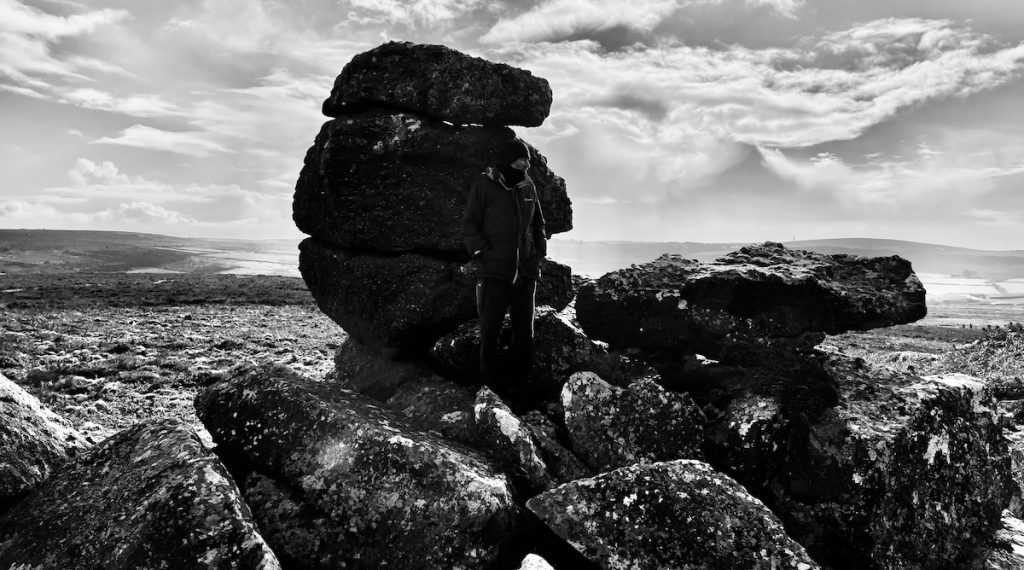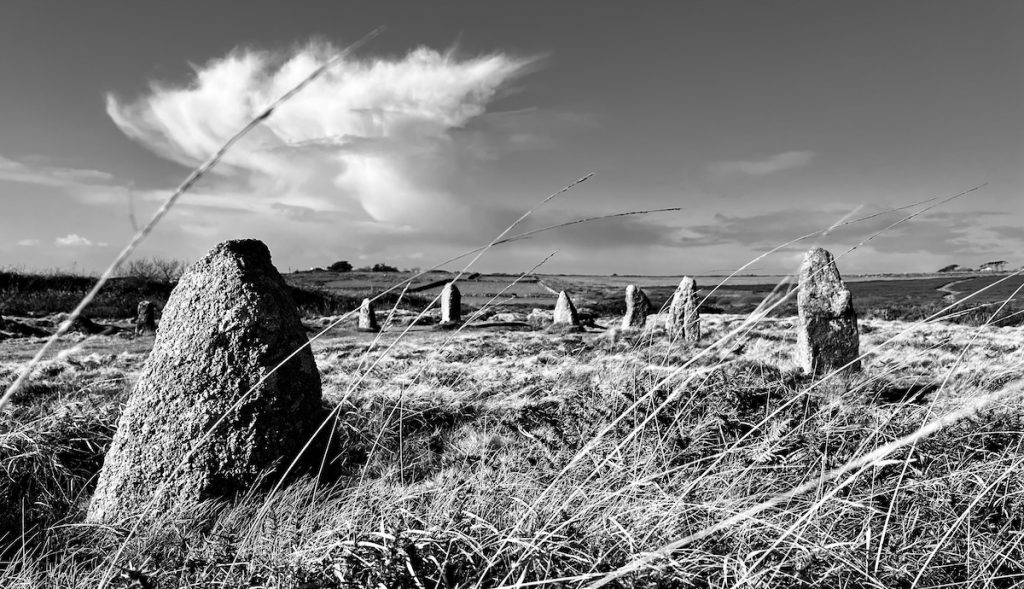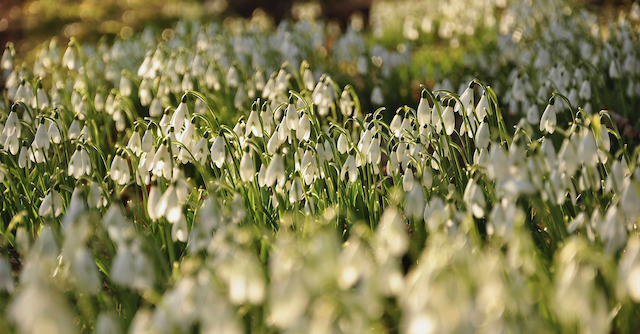February can feel like a funny month. Its shorter, changeable length gives the impression whoever was making up the months tried to make the best of a slightly botched job. The weather is usually foul, this year opting for the three W’s: warm, wet, windy. However, the days are lengthening. The spring bulbs are pushing up. Buds are swelling on the trees. Everything is primed and ready to push for growth. On a damp, dreary day like today, that is what I like to focus on.
February is also my birthday month. As I tip beyond the forty mark, perhaps I do not enjoy them as much as I used to twenty years ago. I no longer ask for material gifts, only for a day to go out walking and dinner prepared for me. This year, my two wishes were granted.

The Hooting Carn
Carn Kenidjack, a natural granite outcrop, needed a revisit. I named it ‘scary place’ down to one visit there after sunset. With the light fading fast, we trekked back towards the car. The wind eerily whistled through the granite, causing some primal part of my brain to fire up. It is no wonder why the name means the Hooting Carn because of the sound the wind makes.
Today, further meteorological forces met us in the shape of an angry squall ten minutes into the walk with no immediate shelter. Thoroughly soaked through, we reached Carn Kenidjack just as the rain eased. The sun reappeared, and the eerie wind dried our soaked gear.
Let’s go a wrastling!
The human desire for storytelling adds another layer to these natural landscapes. One such tale appears in R. Hunt’s 1903 edition of Popular Romances of the West of England. Two miners were walking by Carn Kenidjack from the pub. The story states they were not drunk (I highly doubt that). The softly moaning wind rose into a hellish hooting. Strange lights illuminated the cairn and the shapes and shadows of a horde of people congregated around the rocks. The miners are almost struck down by a darkly dressed rider on the path and hail him down. The rider tells them he’s off to watch the wrestling and tells them to follow to the cairn.
The questionable 12th-century historical author Geoffrey of Monmouth mentions Cornish Wrestling, and it is thought to be a much older sport. Corineus, apparently Cornwall’s first official king, was so good at wrestling, that he fought the giant, Gogmagog and threw him into the sea. Wrestling, or wrastling as the Cornish called it, was full of manliness, which makes me roll my eyes.
Back to the story, the two (likely drunk) miners approached Carn Kenidjack. Figures materialised seemingly from the rock. Figures who’d lose any beauty contests. They were savage, and unkept, with lank hair and painted faces. The rider flung back his cloak, revealing himself to be the Devil. He was the stickler in this wrestling match and watched on as two giant, savage-looking men fought. There can only be one winner, and the victor hurled the loser on its back with a sickening crack. The devil and the crowd circled the victor, hollering and whooping. The miners, being (likely drunk) but (possibly) good Christians, went to the dying man and whispered into his ear a prayer of Christian hope. A sound like a thunderclap echoed through the cairn and the two miners found themselves alone, save for two flame-red devil eyes fleeing west into the dark clouds.

Tregaseal Stone Circle
While more recent folklore views Carn Kenidjack as a hellish place, our ancestors, through the Neolithic, Bronze and Iron Ages, had other ideas. Now, the landscape is a mix of agriculture and open moorland. Long ago, this area would have been woodland which our ancestors slowly cleared as moved to agriculture. Such prominent outcrops would have been useful landmarks for navigation and alignment points. Our walk continues to Tregaseal Stone Circle. I should say ‘circles’ as recently as the 60s this site was a double stone circle. But the farmer wanted to extend a field for crops and destroyed it. Remnants can be found in the nearby boundary wall.
The remaining circle, like Geoffrey of Monmouth’s historical retellings, has undergone some overzealous reconstructions. Still, there is an atmosphere about the place. Apparently, another (probably drunk) miner came upon a fairy feast within the circle and the fae folk tied him up in gossamer threads and left there in the cold all night. This isn’t the only ancient site nearby. Many tombs, holed stones, ancient enclosures and settlements are in sight of Carn Kenidjack’s omniscient presence. If it was merely a sight of reference, or embellished with its own unique storytelling, we’ll never know.
Inspirations for my work
My current work in progress is a supernatural fantasy/crime novel with one foot in the fae realm and the other firmly rooted in Cornwall. I’ve always had an interest in the natural landscape and the tales we tell in relation to it. Also, the human landscape through the centuries from the silent granite standing stones to the cadaveric remains of the county’s prolific mining industry. After the creative hiatus after losing my father-in-law, I am firmly back in the saddle. As the late, great Terry Pratchett said, “Writing is the most fun you can have by yourself.”
Do you have any favourite spots in Cornwall? Or any fun folklore attached to places where you live? Does the landscape and history where you live influence your work? I’d love to hear your tales and experiences, so please reply in the comments.
